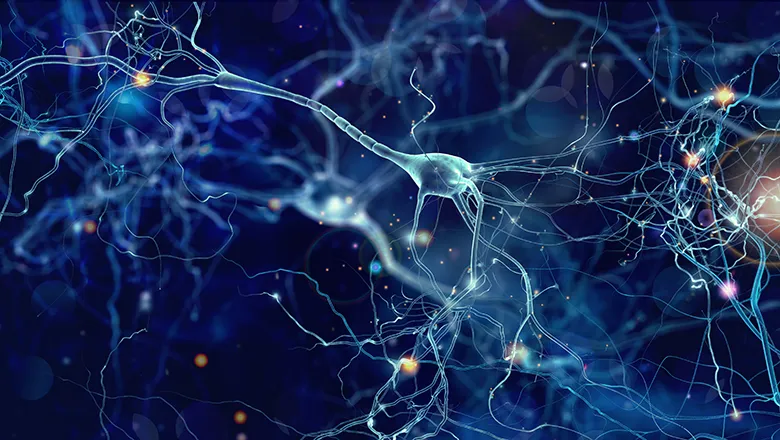"The global 5G rollout marks a shift in telecom systems, which are transforming in order to cater to the transmission of intelligence between machines."
Professor Simeone
18 July 2023
King's engineers to explore brain-inspired computing in 6G telecommunications
Neuromorphic computing holds significant potential for faster and greener telecommunications technologies.

Two King’s engineers will lead a project aimed at developing computing technology inspired by the human brain for wireless communications.
Funded by the Engineering and Physical Sciences Research Council (EPSRC) and by the National Science Foundation (NSF) in the United States, the research will enable quicker and more energy efficient computing and telecommunications and allow better integration of AI into wireless communications. This could revolutionise the field of mobile healthcare, telecommunications and robotics.
Professor Osvaldo Simeone and Dr Bipin Rajendran from the Department of Engineering, alongside Professor Vincent Poor from Princeton University, will explore how brain-inspired or neuromorphic computing can be used in the transfer of information via telecommunications networks, serving as the basis for the emergence of new services in 6G networks.
Professor Simeone said:
"The global 5G rollout marks a shift in telecom systems, which are transforming in order to cater to the transmission of intelligence between machines."
“Conventional communications systems are designed to serve as generic bit pipes, transmitting and storing information in bits. This makes it impossible for existing telecommunication networks to adapt to new situations and to tailor their resource consumption to the semantics of the information being exchanged between end points.”
Dr Rajendran added:
“Neuromorphic systems are designed to emulate the behaviour of neural networks in the brain. Using Spiking Neural Networks (SNNs), a type of neural network model, neuromorphic technology transmits information through the occurrence of spikes."
"Neurons in SNNs gather signals over time and send out a spike when a certain threshold is reached. This way, SNNs allow for event-driven and efficient computations, as information is processed only when needed."
Neuromorphic systems are designed to emulate the behaviour of neural networks in the brain. Using Spiking Neural Networks...neuromorphic technology transmits information through the occurrence of spikes...[allowing] for event-driven and efficient computations, as information is processed only when needed.”
Dr Rajendran
Unlike traditional computers, neuromorphic technology can learn and adapt in real-time. Another significant advantage of neuromorphic computing, according to the researchers, is its energy efficiency. These two features make the integration of neuromorphic computing and telecommunications particularly promising, enabling the use of sophisticated artificial intelligence (AI) tools on mobile devices and systems, providing enhanced services and adapting to user needs.
To develop this cutting-edge technology, Professor Simeone and Dr Rajendran will work with world-leading industrial partners, including Intel Labs, NVIDIA, and AccelerComm. King’s researchers will use their expertise to explore the fundamental principles, algorithms and hardware co-design of neuromorphic communications.


